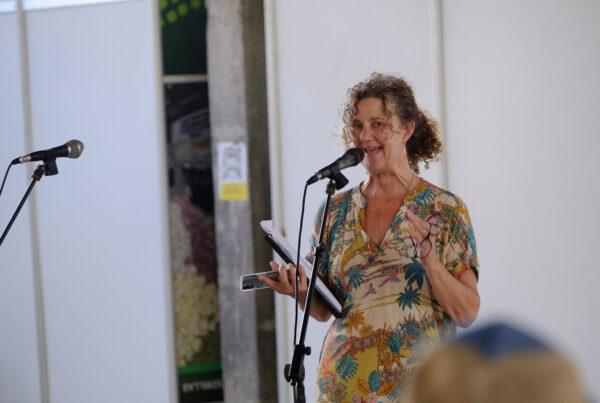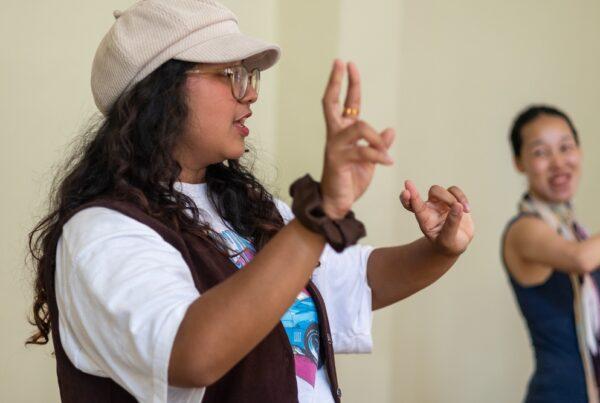
To avoid an illustrative and banal portrayal of the wind as a dramatic character on a stage, the non-verbal play ‘The Wind’ by director Anđelka Nikolić, produced by Theater for children and young people, Kragujevac, sets and brings to life all the other objects the wind encounters, thus creating the illusion of its existence. In terms of form and direction, this play stands out for its bold and precise dramaturgy of the puppet theatre and theatre of objects – only after the revival potential of one object was fully used, the actors would put it down and take another.
The existence and the phenomenon of the character of the wind is shown through the movement of the actors (Dubravka Brkić, Milica Redžić Vulević and Petar Lukić; the stage movement of Isidora Stanišić), and then through the phenomenal, dynamic, original music by Lazar Novkov. Within the situations, kind of miniatures, it is explored how the wind makes the old woman’s scarf fly away, which is later found by the young man and given to the girl; how the wind drives the windmill and the kite; kindles a fire; cools down a sunny and hot day; blows laundry off the clothesline; moves tree branches; how it can ripple the surface of the water…
The play is, among other things, special because animated objects, i.e. theatre puppets are everyday objects (scarf, bag, kite, newspaper, hat, paper windmill, fabric). By using these kinds of objects, ‘The Wind’ teaches children that toys are not always necessary for play, but rather a scarf and imagination are enough.
The play ‘The Wind’ also opened up a wide field of interpretation possibilities for the viewers. The floating bag, for example, evoked in me the recollection of the famous shot from the movie ‘American Beauty’ and someone else might have associated with a swarm of jellyfish or a tornado. The possibilities of interpretation are endless.
The meaning of the performance is not imposed by the director, making the play valuable for the development of creative thinking in children, because there is no one correct solution. Even after watching the performance, many potential interpretations of the seen movements and relationships between the animated objects are very vividly awakened in the mind of a spectator.
I believe the play’s full potential could be fully realised in a more intimate setting, with the audience comprising of children positioned on the stage. The recent rendition of ‘The Wind’ on the Big Stage of the Youth Theatre, while eliciting enthusiastic responses from the audience, presented a certain detachment due to the spatial distance. Few kids from the audience frequently rose to their feet, hands poised to catch foam balls hurled their way, and expressed joyous applauses with hearty laughter, it underscored the children’s evident eagerness to actively engage with the performance.

During the Q&A after the play, one of the questions was: why are there no kids in the audience? The question from a spectator was interpreted as offensive towards the organisers. The debate continued with no answers to the valid point. A spectator concluded that the lack of a young audience is not only problematic for the festival but it also creates an awkward atmosphere for the actors.
In the context of the puppetry scene for children in Serbia, it should be underlined that this is the only show that breaks the established principles of puppetry, that looks at the revival of objects in a very imaginative and even poetic way, and thus takes bold steps forward for the development of puppetry in the country.

Divna Stojanov is a dramaturg and playwright. She also writes theatre reviews.





